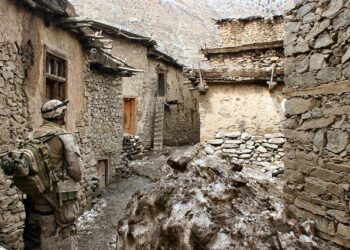Iceland’s Volcanic Resurgence: Seizing Opportunities Amidst Challenges
Iceland, famous for its striking contrast of fire and ice, is currently witnessing a notable geological revival as several volcanoes show increased activity. This rise in seismic events has generated both excitement and concern among scientists and residents. In response, the country is formulating strategies to harness its volcanic features while managing the associated risks. As officials monitor underground movements closely, they are preparing for possible eruptions while also exploring sustainable energy solutions that these natural phenomena could offer. This article delves into Iceland’s volcanic resurgence, its impact on the burgeoning geothermal energy sector, and the wider implications for tourism and local communities.
Reevaluating Safety Protocols in Response to Volcanic Activity
The recent increase in volcanic activity across Iceland underscores an urgent need to reevaluate safety protocols for both locals and tourists. Authorities are actively assessing risks linked to these geological events due to the island’s position over a major tectonic fault line.The renewed volcanic activity has prompted government agencies to prioritize strategies aimed at reducing potential hazards, including:
- State-of-the-Art Monitoring Systems: Implementing advanced technologies to track seismic activities and provide real-time updates.
- Public Awareness Campaigns: Educating citizens about emergency preparedness measures should an eruption occur.
- Infrastructure Enhancements: Upgrading buildings and transport systems to withstand potential volcanic impacts.
- Regular Emergency Simulations: Conducting frequent drills for local emergency services to ensure readiness.
Ahead of expected heightened volcanic activity, Iceland is also exploring ways to sustainably utilize its natural resources. Authorities are considering environmentally friendly geothermal projects that can tap into heat from beneath the Earth’s surface while ensuring robust safety measures are in place.This strategy aims not only at economic growth through renewable energy but also plays a crucial role in disaster management efforts. The table below illustrates how integrating safety protocols with sustainable practices can yield diverse benefits:
| Benefits | Description |
|---|---|
| Sustainable Living Environment | Lowers carbon emissions through renewable energy initiatives. |
| Civic Preparedness Enhancement | Aids communities in improving their readiness against potential eruptions. |
Harnessing Geothermal Energy: Utilizing Natural Resources During Eruptions
As Iceland navigates this geological awakening, attention shifts towards an invaluable resource—geothermal energy sourced from Earth’s internal heat reserves. This renewable form of energy offers numerous advantages not just locally but perhaps within global markets as well. Currently, approximately90% of homes in Iceland utilize geothermal heating, with more than 25%of electricity generation stemming from this source—illustrating how nature’s power can be transformed into a foundation for energy independence.
The urgency surrounding geothermal development intensifies alongside increasing volcanic activity; thus far identified benefits include:
- Narrow Carbon Footprint:A cleaner choice compared to fossil fuels.
- Energizing Security:Diminishes dependence on imported fuels while stabilizing prices.
- The emergence of new drilling ventures stimulates local employment.
To effectively assess prospective geothermal projects,recent studies have identified optimal locations based upon heat availability along with accessibility factors.The following table provides insights regarding current versus projected capacities across key sites throughout Iceland:















